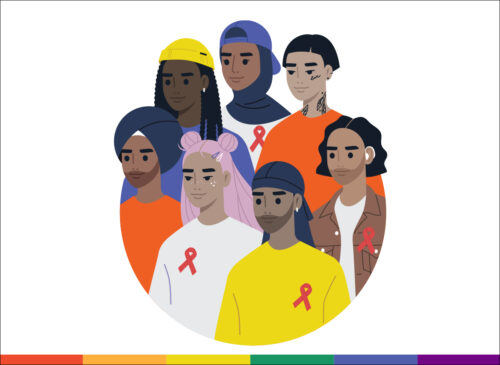Anxiety and stress work against the healthy collaborative relationships that make learning and knowledge advancement possible. How do we maintain the culture of kindness and care that has proven so vital during the pandemic?

As a child of immigrants in Canada, I felt immense pressure to help provide for my family. My parents opened up a Chinese restaurant in a small town in rural Ontario when I was nine years old and I would work there after school from Tuesday to Sunday (thank god no one wants to eat Chinese food on Mondays). This happened until I went away to university at the age of 18 and, even then, I came home almost every other weekend to help.
If the pandemic took place when I was in university, I surely would have moved back home and been expected to work at the family restaurant while trying to attend my classes online. I can imagine the situation now—I would break the news to a hungry customer that, “No, you cannot substitute your one egg roll for an order of orange chicken,” right before unmuting to share with my peers online that “I disagree with Hobbes, life is not nasty, brutish, and short!”
So, yes, I understand deeply how challenging it is for students from marginalized backgrounds to balance living at home, working, and learning online during the COVID-19 pandemic.
I saw that my fellow faculty members shared this understanding at the beginning of the pandemic. There was a similar sense of “caremongering” that took place across academia and in higher education. The caremongering movement that took over Canada in the early months of the pandemic saw people volunteering to buy groceries for seniors, making or donating masks, and contributing to #SupportLocal, to name a few examples.
As a scholar that researches post-disaster community resilience, I could not help but take notes and track the caremongering movement over time. What I discovered aligns with established trends of short-lived solidarity that manifest after disasters and crises. One year into the pandemic, as income inequality was soaring and vaccine distribution was being concentrated in wealthier neighbourhoods, it was clear that the end of the caremongering movement was drawing near. By January 2022, the caremongering movement was dead, as most of the caremongering Facebook groups that had started in March 2020 were inactive or no longer existed.
In academia and higher education, we saw a similar trend. Initially, there appeared to be significant empathy and sympathy for the move to online learning, for the steep learning curve faced by older faculty members doing remote work, for the unequal childcare burdens faced by faculty members with young children, and for students who had their studies impacted or delayed.
However, this solidarity was short-lived. As the pandemic wore on, the corporate machinery of universities kicked back into gear, demanding high levels of productivity from faculty. And, as faculty tried (unsuccessfully) to continue their normal teaching, research, and service work, while also struggling to do childcare and unpaid domestic work, their patience and kindness towards students diminished.
This is unfortunate. In the post-pandemic university, it is more important than ever for us to be kind and build a culture of care. This culture is vital—for students and educators—as the pre-pandemic levels of stress and burnout in both populations cannot be tolerated.
In the post-pandemic university, it is more important than ever for us to be kind and build a culture of care.
During the past two years, while I cultivated my own practices on how to create a culture of care in the classroom, I wanted to also learn from others. So, I took to Twitter to ask “What approaches did you use to practice kindness towards students?” and these were the leading results.
Flexibility
In many aspects of the classroom, flexibility was a common way to build a culture of care. The shift online allowed for asynchronous learning and recorded lectures. This permitted students to engage with the material at times that were most convenient for them. With some students picking up jobs or more hours at work to make up the income lost by other family members as a result of the pandemic, this flexibility was important and welcomed.
Professors also practiced flexibility around deadlines, offering a range of dates students could submit assignments and offering extensions without question. Recognizing that not all students were in a home environment that allowed them to unmute and talk, faculty provided a diversity of ways to participate, including through chat, email, and online forums. Further, flexible test times made it possible for students to complete exams at different times or over longer periods.
Listening
An approach that substantially contributed to building a culture of care in the classroom was listening. Dianne Lalonde, a PhD candidate at Western University, shared that she found that many “students needed someone to talk to” during the pandemic. So, she made time for her meetings with students to be longer and more frequent.
I had the same experience, but I had trouble being kind and listening without overstepping and taking on the role of a therapist or a counselor, or even a friend. This was something that other faculty were struggling with too. Knowing about the counseling services and other resources available to students and being able to direct students to these resources when appropriate became an important part of a faculty member’s toolkit.
Many faculty realized that students responded positively to sincere questions about how they were doing. KB Heylen, a sessional instructor at Macquarie University, shared that “Telling [students] I’m proud of them and acknowledging how hard it is right now” and “Cheerleading them through bad days” made a difference.
Other professors believe that normalizing these challenges by sharing that they themselves are struggling during the pandemic will help their students, who will realize that they are not alone in their anxiety and stress. For example, in an evaluation of one of my courses, a student shared that my “willingness to create meaningful relationships” made the class “extremely enjoyable and exciting.”
Lessening anxiety and stress
It was clear that many of the reasons behind the push for flexibility was to lessen the anxiety and stress that comes with higher education. For Professor Renee Marlin-Bennett from Johns Hopkins University, it was important to “Avoid testing practices that make students super nervous (too many questions on the exam; too many unknowns about the exam; or that incentivize bad practices like cramming).” Others shared that they had cut back on the number of assignments or transitioned exams to an open book model.
Many of the reasons behind the push for flexibility was to lessen the anxiety and stress that comes with higher education.
In one of my classes, I decided to get rid of the exam completely, having determined that it wasn’t the most effective way to test for critical thinking. Reflecting on my pre-pandemic approach, I realized that I felt the need to have exams as an evaluation tool because they were included in other syllabi. However, they didn’t actually suit the learning outcomes of the course I was teaching, so I got rid of them and students were extremely thankful.
Encouraging self-care and wellness
In addition to lessening anxiety and stress, professors shared that they were proactive in encouraging self-care and the importance of physical and mental wellness among students. Professor Elizabeth Sweet from San José State University shared that “I encourage students early and often to put their well-being, and the well-being of their families and communities, first on their priority list, and I build plenty of flexibility into my class to make this easier for them to do.” Similarly, Dr Krys Johnson-O’Leary at Temple University emphasizes to her students that “well-being is more important than deadlines.”
When I asked about my students’ learning needs, one wrote: “Prioritizing self-care—including taking breaks for ourselves, setting boundaries, slowing down, saying no.” Taking this in mind, I have been designing my courses with a focus on wellness. And this has proven effective, with one student writing that they appreciate that I have “prioritized the class’s mental and physical health and was especially accommodating during COVID.”
A way to promote self-care and wellness is to make check-ins a part of the everyday classroom. Margaret Baker, a doctoral student at North Carolina State University shares how she does it: “I do a visual check-in every day in class… Recently, I’ve been calling it, ‘what’s the weather report?’ Thumbs up, thumbs down, thumbs in the middle, shrug, etc. Cues me to know where the student is at without calling out individuals.” Similarly, Laura Munoz, an American Council of Learned Societies Emerging Voices Fellow at the University of Southern California, shares that she “Remind[s] students they are human beings first, students second. If there’s anything happening in [their] personal life that makes it hard to be a human being, it stands to reason that the student part will slide, so let me know what I can do to help alleviate stress [or] provide support.”
Other professors shared on Twitter that they make space by bringing individually wrapped snacks to their in-person classes, especially for courses that meet later in the day. Such acts of care mean a great deal to students who may be too busy to eat.
Creative and alternative assignments
A final approach to building a culture of care in the classroom is to allow students more choice when it comes to assignments. After two years of online learning and staring at screens, I felt students needed an excuse or a motivation to get out of their chairs and into the outside world. So, I suggested an alternative to writing an essay. Instead, my students were asked to do a photovoice project that required them to make an Instagram account and take photos that capture a theme being discussed in class.
Since I was teaching a course on global migration and diaspora cultures, I asked my students to take photos that touch on the topic. I was amazed at the types of projects this approach inspired. One student, Paola, traveled around Toronto to find restaurants that served fusion foods. She captured photos of the restaurants and the food they served in the Instagram account @fusion_foodies_. Another student, Vansh, conducted an “analysis of retail and cultural diaspora and how retail uses cultural diasporas in different ways to turn it into profit for the capitalist world” through the Instagram account @realityofretailandculture. Lastly, Jabril looked inwards and documented his family’s own story of migration and diaspora through the account @jabril_photovoice. Students found this alternative assignment refreshing and challenging.
For the same class, I had the idea of asking students to cook a dish from the diaspora as a way to understand diaspora cultures. I asked students to pick a dish from the UNHCR Cookbook and create a video demonstrating how to make the recipe. This was another attempt to get students to think creatively and do something different after two years of doing the same. Students found this assignment engaging and fun but it did not compromise the rigour of the class. For instance, one student wove in a critical discussion of power, structure, and agency when examining the diaspora origins of spaghetti and tomato sauce from Somalia.
While some of these practices seem obvious and easy to implement, they may slip through the cracks as the usual pressures mount on professors to increase their productivity and publish or perish. We must push to normalize kindness in the post-pandemic university so that it becomes core to the university experience and isn’t treated as an exception or act of resistance.










